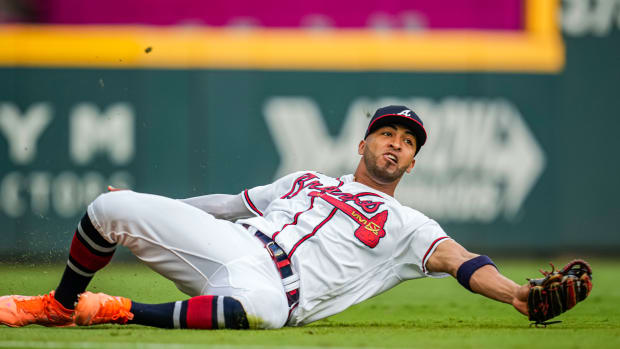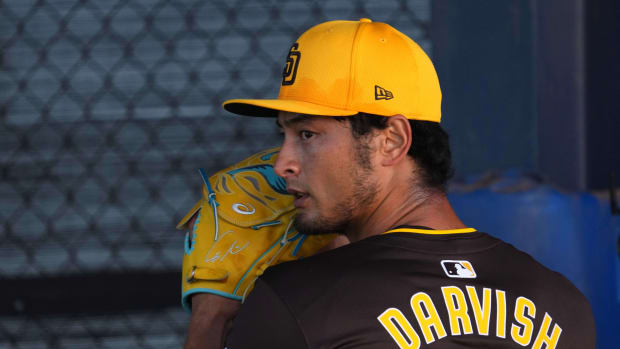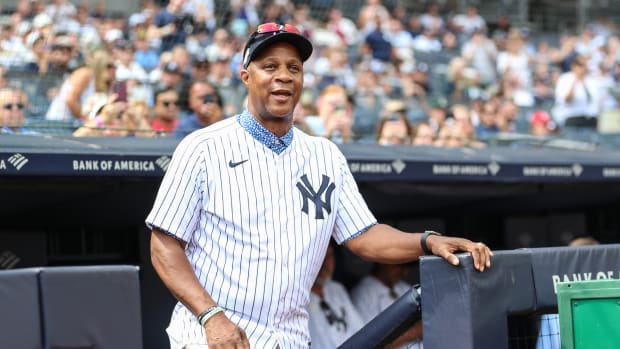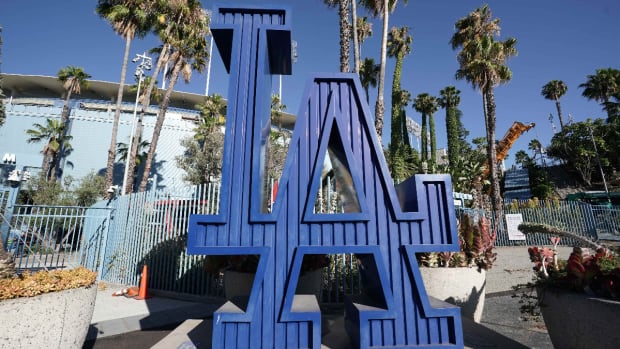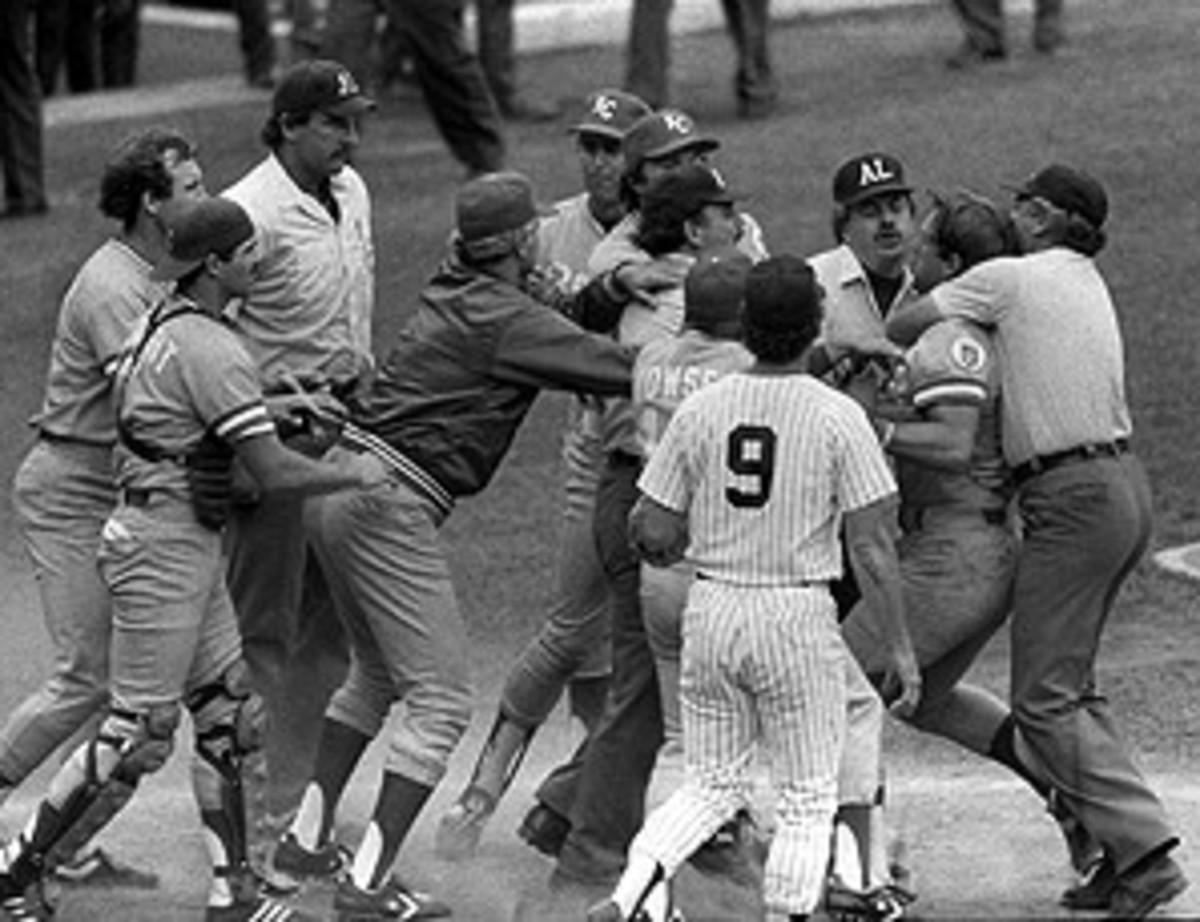
Pine-Tarred and Feathered
What followed seemed at first difficult to understand but would prove impossible to forget. Yankee manager Billy Martin approached home-plate umpire Tim McClelland and informed him that the pine tar on Brett's bat exceeded the 18-inch limit.
Martin was appealing the homer primarily under the little-known and rarely (if ever) enforced rule 1.10 (b): "The bat handle, for not more than 18 inches from the end, may be covered or treated with any material (including pine tar) to improve the grip. Any such material, including pine tar, which extends past the 18 inch limitation, shall cause the bat to be removed from the game."
Earlier in the season, Yankee third baseman Graig Nettles had noticed extensive pine tar on Brett's bat and informed Martin. They had waited for a propitious moment to complain. McClelland measured the bat against the 17-inch width of home plate and discovered pine tar up to 23 inches from the knob. Whereupon, he ruled the homer illegal and the batter out, thus ending the game with the Yankees winning, 4-3.
The scene that followed will be replayed as long as there is videotape. Bug-eyed with rage, accelerating from zero to 60 faster than any test car on the Bonneville Salt Flats, Brett charged out of the dugout with the 6'6" McLelland in his sights. Fortunately, another umpire, Joe Brinkman, interceded, and Brett was merely ejected rather than indicted for assault and battery or worse. The Royals appealed McClelland's ruling.
With the game over, at least temporarily, those of us who covered baseball and lived in the Big Apple had time to react and reflect. New York had always been home to the crazy and unexpected, and this was no different. For a city that had endured an economic crisis, the Son of Sam killings and the "Bronx is Burning" blackouts/riots of just a few years earlier, this zaniness was tame by comparison, though still familiar in Gotham City.
The personae were perfectly cast. Brett always seemed to be in the headlines. After batting .390 in 1980 for the highest average since Ted Williams' .406 in 1941, he had left Game 2 of the World Series with hemorrhoid pain and cheerfully endured minor surgery and endless ribbing ("Let's get to the bottom of this.") The future Hall of Famer would win batting titles in a record three decades and join the 3,000 hit club.
Billy Martin could hardly open his mouth without creating controversy. As a player, he had been traded from his beloved Yankees in 1957 following his role in the Copacabana nightclub rumble on his 29th birthday and years later was sued for breaking the jaw of an opposing pitcher. While managing five teams over 16 seasons including the Yankees five times, he slapped a traveling secretary and got fired at various stops for roughing up another pitcher, fighting with a marshmallow salesman and saying -- five years to the day before the Pine Tar Game -- of Yankees slugger Reggie Jackson and Watergate felon/team owner George Steinbrenner: "The two of them deserve each other -- one's a born liar, the other's convicted." Whatever his indiscretions off the field, Martin was a genius as a manager, winning five division titles, two pennants and a World Series. Hence the famous Sports Illustrated cover reading: "Baseball's Fiery Genius."
The pine-tar incident loomed so large -- and so weird -- that it made the front page of the New York Times. While American League President Lee MacPhail pondered the appeal, Times columnist Ira Berkow had some fun after the bat arrived at league headquarters:
Berkow: "Were there any fingerprints on it?"
(MacPhail's assistant) Bob Fishel: "I didn't see any."
Berkow: "Are there any now, after you held it?"
Fishel: "Not mine. I can tell you that. I held it by the ends."
Berkow: "As if you were eating corn on the cob?"
Fishel: "Sort of, but without the margarine."
Berkow: "Margerine?"
Fishel: "Butter's high in cholesterol."
On July 28 MacPhail upheld the appeal, allowed the homer to stand and ruled that the game must be resumed with the Royals leading 5-4 and two outs in the ninth. Did you notice that Rule 1.10 (b) merely said that the bat must be ejected from the game, not the player? Another rule, American League regulation 4.23, said, "The use of pine tar in itself shall not be considered doctoring the bat. The 18-inch rule shall not be cause for ejection or suspension." Moreover, there was a precedent in 1975, when John Mayberry's two homers in the Royals' 8-7 win over California were allowed to stick, along with his excessive pine tar.
Martin and Nettles had relied on the umpires' ignorance; they were foiled by the league office's research. Rather than graciously accept defeat, Steinbrenner said, "I wouldn't want to be Lee MacPhail living in New York!"
Recalcitrant to the end, the Yankees fielded pitcher Ron Guidry in center and lefthanded first baseman Don Mattingly at second when the game resumed on August 14. Martin ordered pitcher George Frazier to throw to first and second on appeal plays, charging that the new umpire crew had no way of knowing if Brett had touched first and second while heading around the bases. Again, the Yankees were outwitted by MacPhail and Fishel, who produced a notarized letter from the July 24 umpiring crew attesting that Brett and baserunner U.L. Washington had in fact touched toe to sack. The Royals held on to win, 5-4.
A personal note: I was following the pine-tar episode from afar while on vacation on July 24, 1983. I returned in time to edit Steve Wulf's SI story about the game's conclusion. True to form as one of the magazine's cleverest staffers, Wulfie wrote that the Yankees had blown the chance to hype the resumed game with promotions like Brett and Gossage playing Wiffle Ball, an extra game between minor-league teams or the distribution of little pine-tar bats. My contribution was to write a headline that became the title for my first book: Pine-Tarred and Feathered.






























